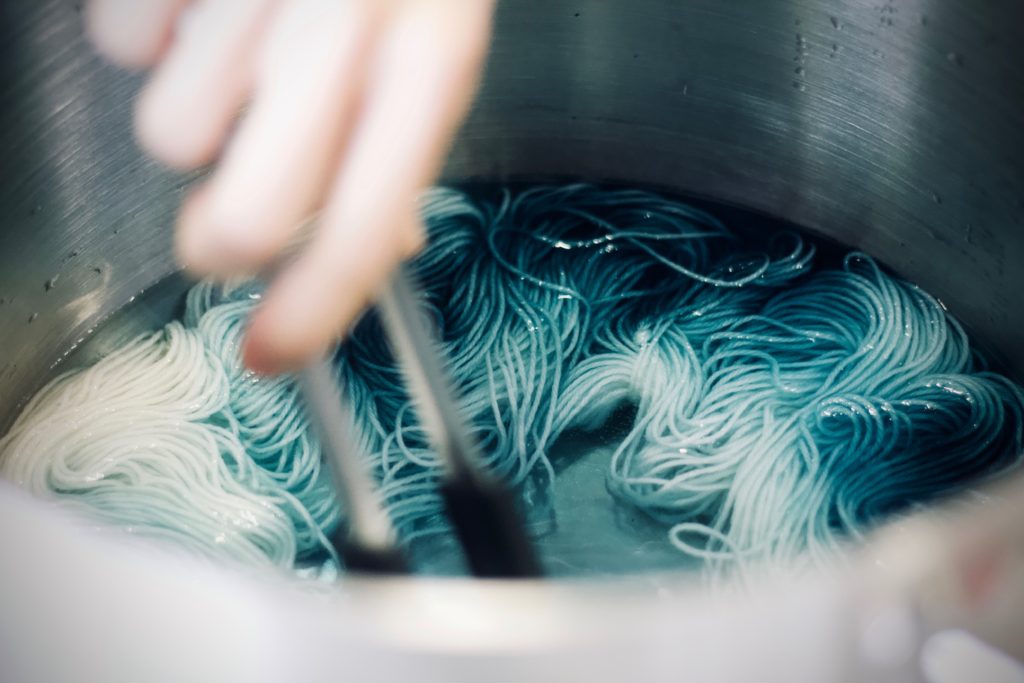Wastewater treatment poses a significant challenge to manufacturers and fashion brands as well as an attractive opportunity for innovation. Presented with the game-changing wastewater treatment system developed by Scaling Programme start-up SeaChange Technologies, Fashion for Good initiated a pilot project to assess the feasibility of the solution at scale. With the support of partners Arvind Limited, BESTSELLER, C&A and PVH Corp., the pilot provides encouraging results for future implementation of the technology in the supply chain.
“Fashion for Good is committed to finding and supporting the most disruptive technologies, such as SeaChange Technologies, to solve key issues in the fashion value chain. SeaChange has made substantial progress in just over two years as a Scaling Programme participant, culminating in this pilot, which provides them the momentum needed to further scale their technology” Katrin Ley, Managing Director Fashion for Good.
PILOT SET-UP
Seeking new solutions to the environmental impact and high costs associated with wastewater treatment, Fashion for Good corporate partners Arvind Limited, BESTSELLER, C&A and PVH Corp., provided business support, development funding and expertise to this pioneering pilot project. As a global leader in apparel manufacturing and with a focus on textiles, advanced materials, and environmental solutions, Arvind Limited provided access to their Effluent Treatment Plant near Gujarat, India, one the world’s largest textile manufacturing operations, to conduct a field evaluation. The SeaChange system was implemented over a period of three months to test and evaluate the feasibility of widescale implementation of the system.
“The Fashion for Good Scaling Programme gave us the opportunity to show the potential of our technology in the field by working with leading apparel brands” Dipak Mahato, Founder, SeaChange Technologies
A Unique Technological Solution
A conventional wastewater treatment process is very complex, involving multiple different steps, cleaning the wastewater further with each technique. SeaChange’s technology is able to plug into several existing points of the conventional system. The pilot provided an opportunity to test SeaChange’s technology in multiple different waste streams. The waste streams tested included sludge, dyeing concentrates and combined effluent, Reverse Osmosis reject and Mother Liquor. All waste streams were successfully treated by the SeaChange system and reduced to minerals in a single pass, demonstrating the technical viability of the technology to process wastewater. Sludge was selected as the most viable application for SeaChange, given its hefty environmental impact and cost of disposal.
“Effective wastewater treatment remains a big challenge for the textile and apparel industry, finding an efficient solution is crucial for the industry. C&A is committed to achieve zero discharge of hazardous chemicals throughout the supply chain and supporting its suppliers in its continuous improvements to achieve it” Aleix Busquets Gonzalez, Head of Global Sustainability, C&A
SeaChange Technologies has developed an innovative mechanical system where wastewater or sludge is heated, pressurised and injected as an aerosol into a cyclonic separator. This single-step process uses the cyclonic separation technique to draw out unwanted materials, microplastics and other non-biodegradable components from the water itself. Due to the heat and presence of oxygen in the air, these organic compounds then undergo thermal oxidisation causing them to degrade to CO2.
This is done by generating near-critical water conditions, where about 5-10% of the water mass becomes ionised. When water ionises, it creates free radicals that can destroy most organic material. By using heat from the organic oxidation process, energy use in maintaining this near-critical environment is incredibly efficient, using only about 60% of what would otherwise be required for water vapourisation. The process enables treatment of wastewater while eliminating the production of sludge and mitigating greenhouse gas emissions; the CO2 generated is just a small fraction of the greenhouse gasses generated by conventional processes.
THE INNOVATION OPPORTUNITY
“Partnership and innovation are key to finding scalable solutions to industry challenges. This pilot allowed us to test and further understand some of the steps needed as we work to completely remove water pollution from wet processors. To drive fashion forward, we cannot stop at simply reducing our negative impacts; we must work to eliminate them.” Marissa Pagnani McGowan, Senior Vice President of Corporate Responsibility, PVH Corp.
A typical dyehouse generates one to three tonnes of sludge per day from wastewater treatment, costing over $200,000 annually for its disposal and generating over 5,000 tonnes of greenhouse gases a year. Across thousands of suppliers and/or dyehouses, these costs are tremendous and only increasing as options for its safe disposal become more limited under public pressure to improve sustainability. Implementing the SeaChange system into their treatment facility will effectively eliminate such costs as well as the associated environmental impacts.
In the coming year, SeaChange will be pursuing funding and strategic partnerships in order to implement the commercial application of its system on a wide scale.
